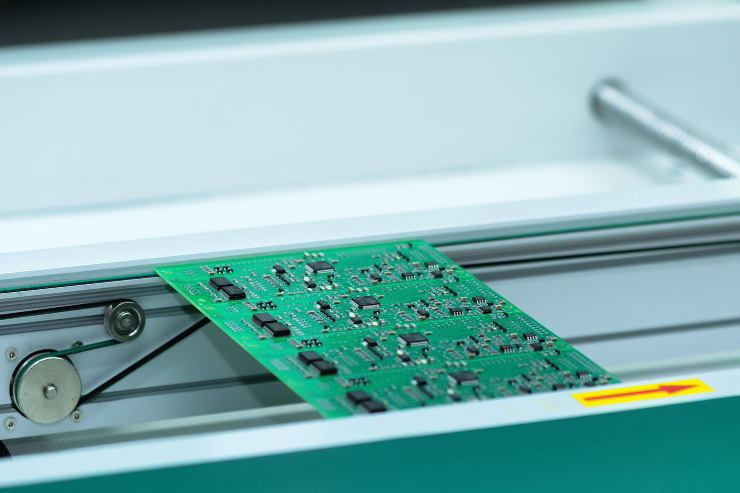Tips for Designing Parts for Injection Moulding: Optimising Your Design for Better Manufacturing Efficiency and Quality
- josh61940
- Oct 20
- 4 min read

Designing a part for injection moulding requires more than just a great idea, it requires a design that’s optimised for the manufacturing process. At Amey Plastics, we work closely with our clients to refine designs that will ensure smooth, cost-effective production. In this blog, we’ll share with you some practical tips to help design parts that are easier to manufacture, cost less to produce and perform better in the long run.
1. Design for Manufacturability (DFM)
One of the first things to consider when designing parts for injection moulding is Design for Manufacturability (DFM). DFM ensures that your part can be produced efficiently without unnecessary complications
Key tips:
Avoid intricate shapes that require complex tooling or multiple mould cavities.
Ensure uniform wall thickness to prevent warping, sink marks or voids. Variations in thickness can lead to uneven cooling and result in defects.
Use draft angles, parts should have a slight taper (1–3 degrees) to allow them to be removed from the mould without damaging the part.
2. Consider Wall Thickness
Thicker walls are more prone to warping and shrinkage, which can compromise the strength and aesthetic of your part. When designing parts for injection moulding, aim for consistent wall thickness across the entire part.
Key tips:
For optimal results, maintain uniform wall thickness between 1.5mm and 4mm for most plastics.
Avoid sharp corners or transitions; instead, use radiused corners to reduce stress and improve flow during injection.
3. Add Ribs and Gussets for Strength
Instead of increasing the thickness of your part to add strength, consider using ribs and gussets. These are thin, reinforcing structures that can increase the strength of your part without adding much material.
Key tips:
Design ribs to be no thicker than 50% of the part wall thickness. This ensures they don’t create too much internal stress.
Avoid ribs that run parallel to the part walls, these can trap material and cause flow issues. Opt for ribs that run at a slight angle.
4. Use Uniform Gate Locations
The location of your gate (where the material is injected into the mould) plays a huge role in how your part is filled and how quickly it cools. A well-placed gate improves part quality and reduces the chance of defects.
Key tips:
Place the gate at the thickest part of the part so the material can flow evenly and avoid problems like air traps or short shots.
Ensure the gate location allows for easy removal of the part after injection, ideally in an area that won't interfere with part function.
5. Minimise Undercuts
Undercuts, features on the part that prevent it from being ejected easily from the mould, can complicate the moulding process and require more expensive tooling.
Key tips:
Minimise undercuts or design them so that they can be easily incorporated into the mould with side actions or lifters.
If an undercut is necessary, consider rotating the part or adding inserts to simplify the moulding process.
6. Add Features for Assembly and Ease of Use
Designing with assembly in mind can save time and money later on. By adding features that enable easy assembly or integration with other components, you can streamline the production process.
Key tips:
Incorporate snap fits or interlocking parts where appropriate, reducing the need for additional fasteners.
Design for ease of handling, avoid sharp edges or complex geometry that makes assembly more difficult.
7. Choose the Right Material
The material you select for your part is just as crucial as the design. Different plastics have varying properties that affect strength, flexibility, durability and appearance.
Key tips:
Match material properties to the application. For instance, if your part will be exposed to high temperatures, opt for a material like polycarbonate or ABS.
Consider material flow characteristics, materials with low viscosity are easier to mould but may not be as durable.
8. Plan for Cooling Efficiency
The cooling stage of injection moulding is one of the most time-consuming parts of the process, so efficient cooling design is essential.
Key tips:
Use cooling channels that allow the molten plastic to cool quickly and evenly across the entire part.
Ensure the cooling system is balanced, allowing for uniform cooling to avoid warping, shrinkage and cracking.
9. Test with Prototypes
Before diving into mass production, it’s always a good idea to test your design with prototypes. Prototyping allows you to identify potential issues in the design, materials and manufacturing process, so you can make adjustments before scaling up.
Key tips:
Use 3D printing or rapid prototyping to quickly test the form, fit and function of your part.
Iterate based on testing to improve part performance and manufacturability before committing to full production.
Optimising Design for Injection Moulding Success
When done right, injection moulding is a highly efficient process that delivers consistent, high-quality parts. By following these design tips, you’ll ensure smoother production, reduced costs and better performance for your parts.
At Amey Plastics, we’re here to support you at every stage of the process, from initial design through to prototyping, tooling and final production. Whether you’re designing for functionality, strength or aesthetic appeal, we can help you optimise your designs for injection moulding success.
Need help refining your design? Get in touch with us today to start your next project with expert guidance and quality results. Contact the Amey Plastics today team on 01730 266 525 or email sales@ameyplasticsltd.co.uk.






Comments